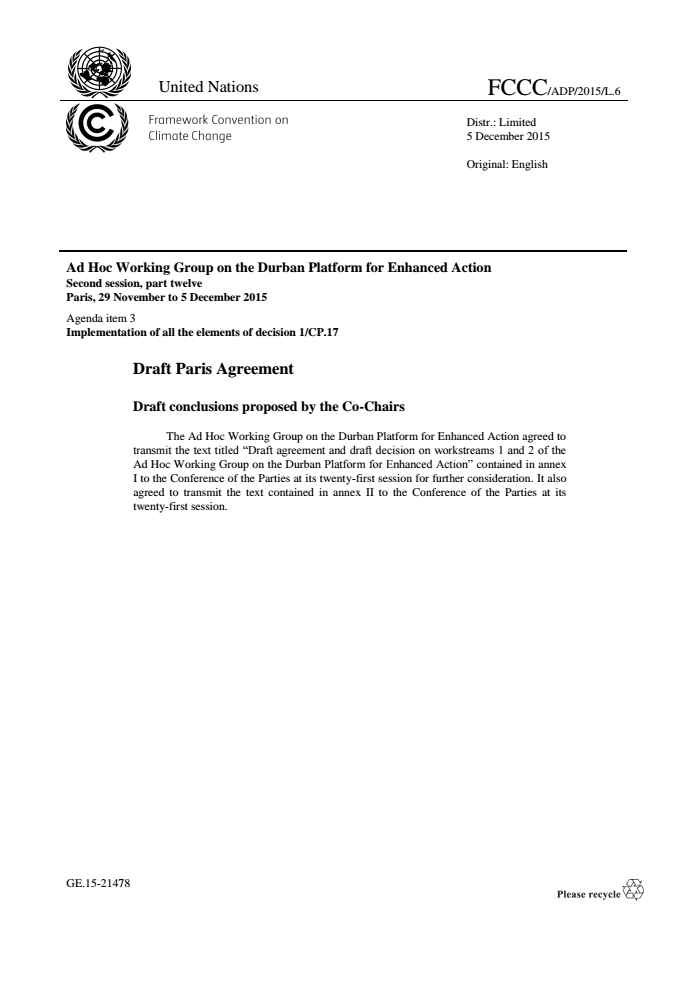Draft Paris Agreement and the submissions by top polluters who also happen to be top profit makers reveal that arrangements have not been made to make top polluters pay the “ecological debt” that global north owes to the south.
Some 23 years after the United Nations Framework Convention
on Climate Change Convention (UNFCCC) and 18 years after the Kyoto Protocol,
over 160 countries have communicated voluntary Intended Nationally Determined Contribution
(INDC) for the period 2021 to 2030 for combating climate crisis. Demanding
‘fair share’ of world’s resources, insisting on common but differentiated
responsibilities (CBDR) to end climate inequality, Indian Government too has
communicated its 38 page long INDC. Its INDC is “contingent upon an ambitious
global agreement including additional means of implementation to be provided by
developed country parties, technology transfer and capacity building following
Article 3.1 and 4.7” of the UNFCCC.
While it is true that “both in terms of cumulative global
emissions (only 3%) and per capita emission (1.56 tCO 2 e in 2010), India’s
contribution to the problem of climate change is limited”, the fact is that
‘Make in India’ kind of initiative paves the for transfer of hazardous and
polluting industries to India. Although it has officially taken note of
“consumption-based or imported emissions”, India’s INDC fails to stop transfer
of industries that emit Green House Gases (GHGs). Amit Narang, Counsellor, Permanent
Mission of India to UN noted it in New York while delivering his remarks on
“The rich are from Mars, the poor are from Venus: Tackling climate inequality
for a sustainable world” on 21st November, 2015.
The ultimate objective of UNFCCC and any related legal
instruments is that the Conference of the Parties (COP) may adopt is to
achieve, in accordance with the relevant provisions of the Convention,
stabilization of greenhouse gas concentrations in the atmosphere at a level
that would prevent dangerous anthropogenic interference with the climate
system. UNFCCC’s text refers to “dangerous anthropogenic interference with the
climate system” which in reality is an act of industrial warfare against
climate and its allied ecosystem whose impact has become glaring. Its continued
relevance for the communities of shared fate and global order is linked to the
decision by the richest countries to undergo mandatory de-addiction.
Notably, industrialized countries have committed to
implementing quantified economy-wide emissions targets for 2020. But the INDCs
of the top polluters- China, USA and EU including India aren’t significant enough
to deal with climate crisis from 2020 onwards. Such announcements by the top
polluters are far from what is required based on scientific evidence in order
to limit global temperature rise by 2°C.
There was a need to cut emissions to the tune of 70 %
below 2010 levels by 2050 to be on the path of limiting 2°C temperature
increase.
The 21st Conference of the Parties to the
UNFCCC (COP21) aims to achieve a new international agreement on the climate,
applicable to all countries, with the aim of keeping global warming below 2°C. But by now it is quite clear that INDCs submitted by the key countries
aren’t sufficient to meet the 2OC target.
The 2015 agreement will only come into effect and be
implemented from 2020. The Doha Amendment covers the pre - 2020 period, which
is critical in the overall mitigation effort to hold the increase in global
average temperature below 2° C above pre- industrial levels. The agreement will have any purposeful meaning only if it can subordinate commercial contracts to international law, the Paris
treaty. 
No comments:
Post a Comment